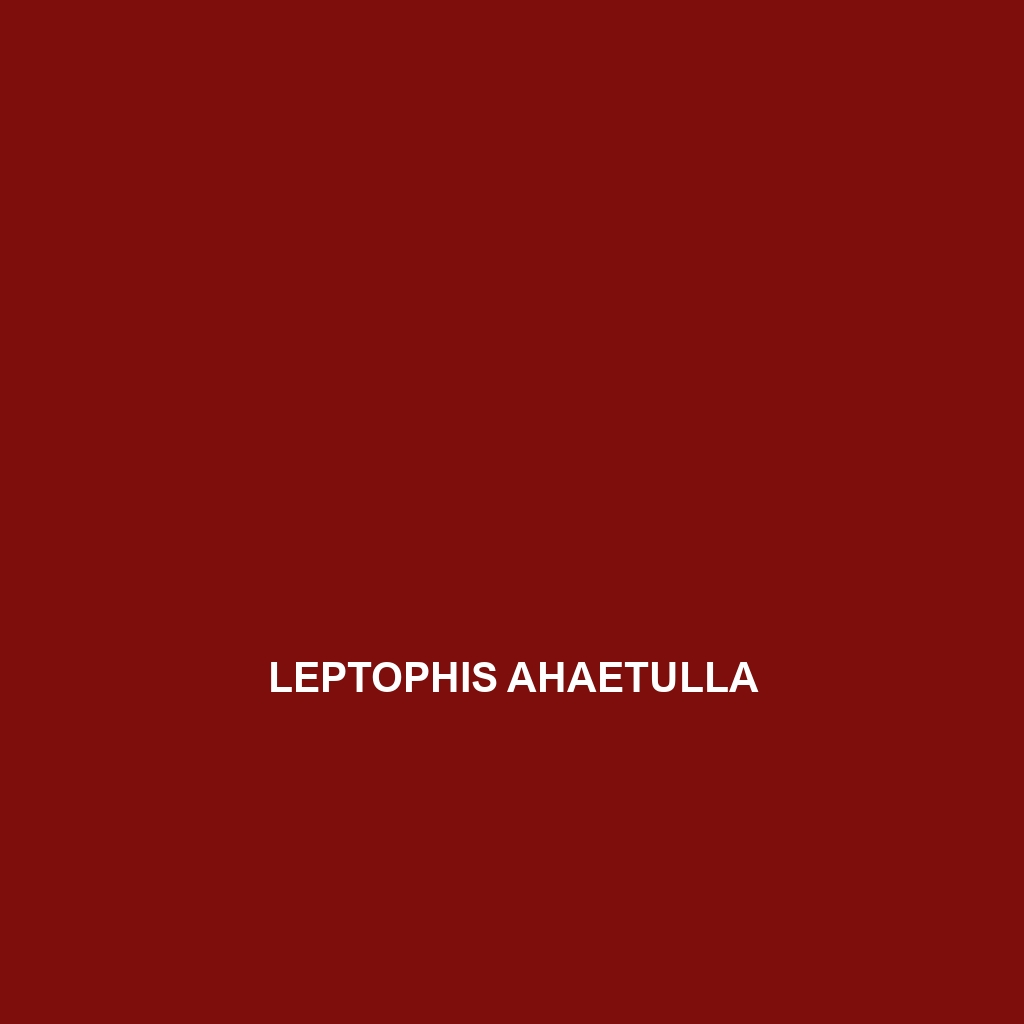Common Name
Leptophis ahaetulla
Scientific Name
Leptophis ahaetulla
Habitat
Leptophis ahaetulla, commonly known as the green whip snake, thrives in a variety of habitats primarily found across Central and South America, including regions such as Costa Rica, Panama, Colombia, and parts of Venezuela. This species is predominantly located in tropical rainforests, but it can also inhabit open savannas and occasionally venture into temperate forests. The green whip snake prefers humid, well-vegetated areas where it can easily camouflage among foliage, utilizing its environment to hunt and evade predators. The temperature and humidity of its rainforest habitat are critical for its thermoregulation and overall well-being, making these environmental conditions essential for its survival.
Physical Characteristics
The green whip snake is a slender and agile reptile, reaching lengths of up to 2 meters (approximately 6.5 feet). Its most distinguishing feature is its vibrant green coloration, which allows it to blend seamlessly into its leafy surroundings. The snake possesses a long, whip-like body that is perfectly adapted for arboreal living, enabling it to navigate branches with ease. The head is relatively small and pointed, with large, expressive eyes that provide excellent vision. A unique characteristic of Leptophis ahaetulla is its ability to change shades based on its surroundings, a behavior known as crypsis, enhancing its camouflage against potential threats.
Behavior
Leptophis ahaetulla exhibits a primarily diurnal lifestyle, being most active during the day. This species is known for its extraordinary agility, often seen gracefully moving through trees in search of prey. While it does not migrate, the green whip snake shows particular social behaviors, such as basking in groups during cooler mornings. Notably, the mating rituals of this snake can be fascinating; males often engage in elaborate displays to attract females, including body posturing and tail twitching. During breeding season, the green whip snake exhibits increased territoriality, showcasing its vibrant colors to ward off rival males.
Diet
The diet of Leptophis ahaetulla primarily consists of a variety of prey, making it an agile and effective predator. It is considered an insectivore, primarily feeding on small insects and lizards, though it will occasionally consume small amphibians. Utilizing its speed and agility, this snake employs the ambush method of hunting, waiting for unsuspecting prey to pass by before striking with precision. Its forked tongue aids in detecting chemical cues in the environment, enhancing its ability to locate food even in complex habitats like rainforests and savannas.
Reproduction
The reproductive cycle of Leptophis ahaetulla typically begins during the warmer months, with mating often occurring between late spring and early summer. After a gestation period of around 45 to 60 days, females lay between 5 to 20 eggs in moist, secluded areas. The young snakes emerge fully formed and are independent from birth, relying on their natural instincts to hunt for food. Parental care is absent in this species, emphasizing the importance of camouflage and instinct for survival in their early days. This reproductive strategy allows for rapid population growth, especially in environments where conditions are optimal.
Conservation Status
Currently, Leptophis ahaetulla is classified as a species of “Least Concern” according to the International Union for Conservation of Nature (IUCN). This status indicates that there are no immediate threats to its survival and that the population remains stable. However, habitat destruction due to deforestation and urbanization poses potential risks to its preferred habitats. Conservation efforts are essential to monitor populations and encourage habitat preservation to ensure that this species continues to thrive in the wild.
Interesting Facts
One of the most intriguing aspects of Leptophis ahaetulla is its remarkable ability to mimic the vibrant green of surrounding foliage, not only to evade predators but also to enhance its ability to ambush prey. Additionally, this species exhibits a level of tolerance to certain environmental changes, showing resilience in altered habitats. Another fascinating fact is that despite its slender and seemingly harmless appearance, the green whip snake has a strong bite if provoked, though it is non-venomous and displays a mild disposition towards humans.
